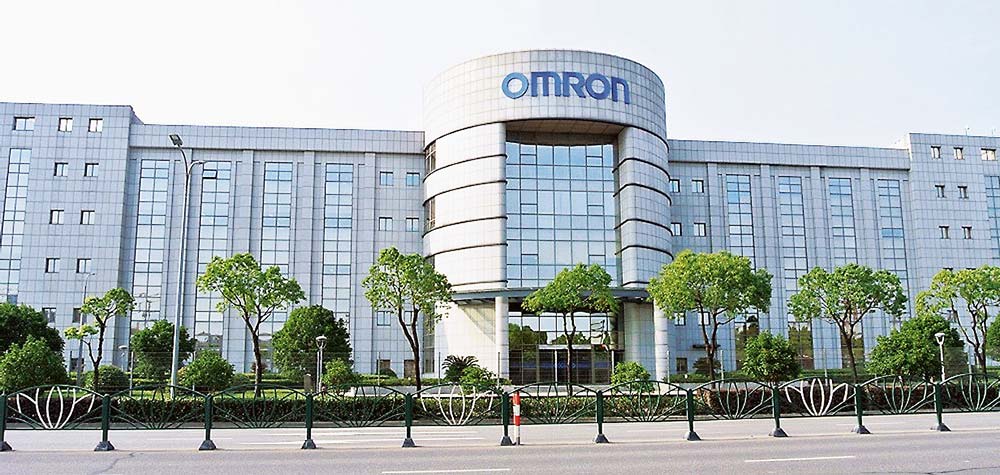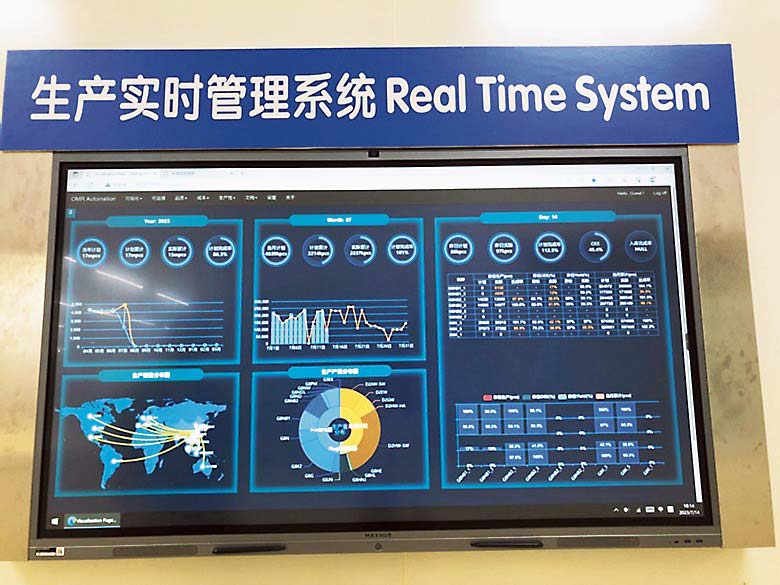ASIA ELECTRONICS INDUSTRYYOUR WINDOW TO SMART MANUFACTURING
OMRON Shanghai Accelerates towards Autonomous Growth
OMRON Corporation deploys its electronic component business in the Chinese market with development, manufacturing, and sales under one umbrella. Each plant accelerates value creation toward autonomous growth. Particularly The OMRON Shanghai Factory in Shanghai, China has been driving the group in achieving “super automation” and sustainable manufacturing.

The Shanghai Factory under the electronic components business is situated approximately one hour by car from the city center. Build on an about 80,000sq.m lot, the factory with about 600 employees manufactures products primarily for Greater China, followed by the Americas.
Like its Shenzhen Factory, the Shanghai Factory is indispensable for OMRON for the growth of its electronic components business toward achieving its long-term vision. The electronic components business sets forth the transformation of three key social issues. By accomplishing the transformation, it will strengthen capabilities for manufacturing, quality, and value creation to achieve further business growth.
Shanghai OMRON Automation System Co., Ltd. (OMP) was established in 1993. Specifically, the Shanghai Factory was completed in 2012. Its mainstay products are automotive relays. Also, it produces switches and connectors. In addition to shipments to China’s domestic market, the factory also makes shipments to North America, countries in Europe, Japan, and the Asia-Pacific region. In FY2023, total sales in volume have been steadily growing. This increased by about 20 percent compared with FY2020, which was the final year of the previous medium-term management plan.
Toward “Super Automation”
In particular, the Shanghai Factory carries on trailblazing activities in terms of digitalization. Local members in China constructed for themselves a real-time system that enables visualization and utilization of information on quality and production data. Also, a system base that enables recognition of the same data in real time on the Japan side was developed.
Specifically, the system visualizes all information on manufacturing, each line, and production status. Thus, improvement of manufacturing quality is possible using big data. At the same time, the system base also improves productivity. Moreover, OMRON deploys the system base to its group factories.
One feature of “super automation” is predictive maintenance. By collecting and visualizing data in the production site using sensors, programmable logic controllers (PLCs), and controllers owned by OMRON, the company delivers optimum production operation.
With respect to the visualization of equipment failure, the company collects data on the state of motor, temperature, and resistance using a status monitoring device at the equipment drive section. The system carries out information processing and visualization based on big data to display status of each equipment. The system base allows workers in the production site to monitor the status of the production site in real time using a tablet. Thus, work efficiency was improved and paperless operation was achieved. Seeing screen examples at the Shanghai and Shenzhen Factories explains how well the two factories are linked.

Toward achieving “super automation” factories, the development of human resources is also indispensable. Specifically, it aims to nurture working members to become engineers. To facilitate further growth of employees, OMRON increases training and ability development opportunities. The company aims to achieve automation of the entire factory so that humans can put more efforts to think and imagine. Thus, the Shanghai Factory continuously implements initiatives towards achieving “super automation” manufacturing.
Use of Sunlight
The Shanghai Factory targets a manufacturing factory that attains both business growth and green process. It produces relay switches that contribute to carbon neutrality, including the adoption of direct current (DC) and the promotion of electrification, with stable quality and clean energy.
In implementing sustainable manufacturing that achieves both economic growth and environmental protection, the company adopts the active use of solar panels. Going on top of the roof, one can enjoy a grand view of a sea of panels. OMRON started installing panels about 10 years ago. At present, the company has an installation area of 8,300sq.m. Solar panels cover about 10 percent of the company’s monthly electricity usage. In FY2022, the company reduced carbon dioxide (CO2) emissions by about 271 tons. As there is still some lot left, the company eyes further installation of solar panels.
The Shanghai Factory provides products for automobiles. Hence, the factory will further strengthen its product quality and deploy automation to other factories. The Shanghai Factory aims to improve production efficiency by about 20 to 30 percent through “super automation”.




